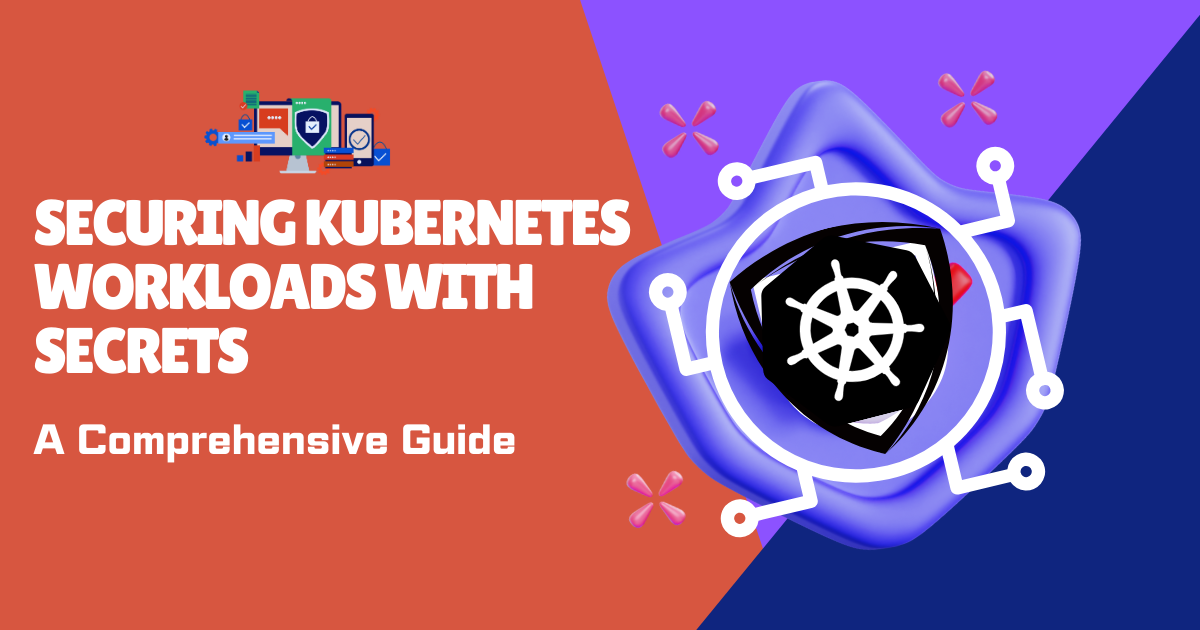Securing Kubernetes Workloads with Secrets: A Comprehensive Guide
 D V Shashidhar Reddy
D V Shashidhar Reddy
In the world of container orchestration, Kubernetes stands out as a powerful tool for automating the deployment, scaling, and management of applications. However, with great power comes great responsibility—especially when it comes to managing sensitive data. Kubernetes provides robust mechanisms to handle sensitive information securely, primarily through the use of Secrets. This guide explores Kubernetes Secrets in detail, including their types, usage, and advanced considerations to ensure your data remains protected.
Understanding Kubernetes Secrets
Kubernetes Secrets are objects used to store and manage sensitive information, such as passwords, API keys, SSH keys, and TLS certificates. Unlike ConfigMaps, which are used for non-sensitive data, Secrets are designed to keep this information confidential. By default, Secrets are base64-encoded (though not encrypted) and can be accessed by applications as environment variables, mounted files, or through the Kubernetes API.
Types of Kubernetes Secrets
Kubernetes supports several types of Secrets, each tailored to specific use cases. Below, we explore the three most common types:
- Generic Secret
Purpose: A Generic Secret is used to store arbitrary key-value pairs, including sensitive data such as database credentials or API tokens.
Common Use Cases:
Storing database connection strings.
API keys for external services.
SSH keys for server access.
Creation Example: A Generic Secret can be created using the kubectl command line (Imperative way):
or a YAML file (Declarative way):
- Docker-Registry Secret
Purpose: A Docker-Registry Secret stores Docker registry credentials, which are necessary for pulling images from private Docker registries.
Common Use Cases:
Authenticating with private Docker Hub repositories.
Accessing self-hosted Docker registries.
Creation Example: Use the following kubectl command to create a Docker-Registry Secret:
- TLS Secret
Purpose: A TLS Secret is specifically used to store TLS certificates and private keys, which are essential for securing communications between services.
Common Use Cases:
Securing ingress controllers with HTTPS.
Managing secure internal service communications.
Creation Example: Create a TLS Secret using the following command:
or a YAML file:
Best Practices for Handling Kubernetes Secrets
Effective management of Kubernetes Secrets involves adhering to best practices to ensure their security and integrity.
- Enable Encryption at Rest
Kubernetes Secrets are base64-encoded by default, which is not sufficient for protecting sensitive information. Configure encryption at rest to secure Secrets:
- Utilize Role-Based Access Control (RBAC)
RBAC policies help manage access to Secrets, ensuring that only authorized users and services can access them. Define roles and role bindings to control access:
- Minimize Secret Exposure
Environment Variables: While convenient, exposing Secrets as environment variables can risk leakage in logs or error messages. Prefer using file mounts for added security.
Namespace Isolation: Restrict Secrets to the specific namespaces and applications that require them to avoid unnecessary exposure.
- Regularly Monitor and Audit
Monitoring and auditing Secret access is crucial for security. Use Kubernetes audit logs to track who accesses Secrets and when. Consider using security auditing tools like "kube-bench" and "kube-hunter".
- Implement Network Policies
Network Policies control traffic flow between pods, which can be used in conjunction with Secrets management to further restrict data access:
Advanced Security Considerations
Beyond basic best practices, consider these advanced measures to enhance the security of your Kubernetes Secrets:
- Integration with External Secret Management Tools
For enhanced security, integrate Kubernetes with external secret management tools such as HashiCorp Vault, AWS Secrets Manager, or Azure Key Vault. These tools offer features like:
Dynamic Secrets: Generate secrets on-demand with expiration policies.
Automated Rotation: Automate secret rotation to minimize risks.
Granular Access Controls: Define detailed access policies beyond Kubernetes RBAC.
- Secure etcd
Kubernetes stores all data, including Secrets, in etcd. Ensure etcd security by:
Encrypting Data: Enable encryption for data at rest in etcd.
Restricting Access: Limit access to etcd and run it in a secure, isolated environment.
Backing Up Regularly: Perform regular backups and secure their storage.
- Keep Environment Updated
Regular updates and patches are vital for maintaining security. Ensure Kubernetes and any integrated tools are up-to-date with the latest security fixes to protect against vulnerabilities.
- Adhere to Comprehensive Security Practices
Implement general Kubernetes security practices:
Pod Security Policies: Enforce security standards for pods, including privilege levels and host access.
Image Scanning: Scan container images for vulnerabilities using tools like Trivy or Clair.
Principle of Least Privilege: Ensure users and services have only the necessary permissions.
Conclusion
Kubernetes Secrets is a vital tool for securely managing sensitive data like API keys, credentials, and TLS certificates within your cluster. By understanding and properly implementing different types of Secrets, along with best practices such as encryption at rest, RBAC, and regular audits, we can significantly enhance our Kubernetes security.
However, securing Kubernetes workloads goes beyond just managing Secrets. Integrating advanced security measures, such as external secret management tools and securing etcd, further strengthens our defense. As Kubernetes and security threats continue to evolve, staying proactive and regularly updating our security practices are essential for maintaining a robust and secure environment.
Mastering Kubernetes Secrets is a crucial step, but it’s part of a broader security strategy that requires continuous attention and adaptation. By doing so, we can ensure that our Kubernetes workloads remain secure, efficient, and resilient against emerging threats.
🌟 Found value in this post?
Give me a boost by buying me a coffee! ☕
Buy Me a Coffee! It's like adding extra fuel to the content engine!!
Subscribe to my newsletter
Read articles from D V Shashidhar Reddy directly inside your inbox. Subscribe to the newsletter, and don't miss out.
Written by

D V Shashidhar Reddy
D V Shashidhar Reddy
I'm a passionate DevOps Engineer with DevSecOps, Cloud, and SDLC expertise. I specialize in CI/CD pipelines, containerization, and infrastructure as code, and love sharing my knowledge.
